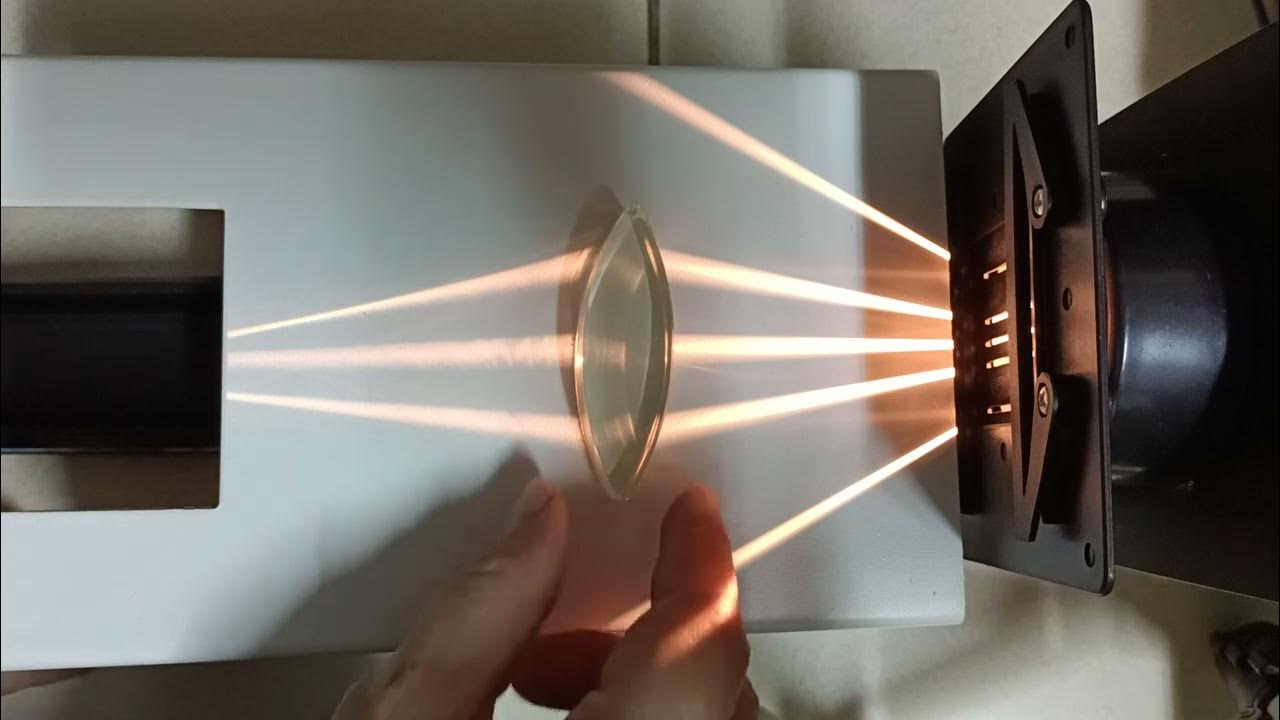minopp 24 okt pt 1
Summary
TLDRThe video discusses the phenomenon of double refraction in anisotropic minerals, where polarized light splits into two rays as it enters these materials. Key concepts include the importance of the mineral's optical axes, the role of the analyzer in microscopes, and the resulting interference colors observed due to wave interaction. It emphasizes how alignment of the mineral's axes with polarized light affects the splitting process and highlights the distinction between colors produced by absorption and those from interference. This exploration provides insight into the complexities of light behavior in anisotropic materials.
Takeaways
- 😀 Anisotropic minerals cause light to behave differently, splitting into two paths due to varied velocities.
- 😀 Double refraction occurs when light interacts with minerals, resulting in two optical axes.
- 😀 The cutting angle of the mineral affects whether one or two refractive indices are observed.
- 😀 Light polarized by a polarizer interacts uniquely with anisotropic materials based on the orientation of the optical axes.
- 😀 When the optical axes align with the polarizer, light does not split, resulting in a single pathway.
- 😀 The interaction of polarized light with minerals can create colors through interference, not absorption.
- 😀 Interference colors are produced when different light paths interact, differing from colors seen in other techniques.
- 😀 Understanding the principles of polarization and refraction is crucial for studying mineral properties.
- 😀 The relationship between light behavior and mineral structure provides insights into material characteristics.
- 😀 Further inquiries are encouraged to deepen understanding of the discussed optical phenomena.
Q & A
What happens to light when it enters anisotropic minerals?
-When light enters anisotropic minerals, it experiences double refraction, splitting into two rays that travel at different speeds depending on the mineral's optical axes.
What is double refraction and why is it significant?
-Double refraction is the phenomenon where a ray of light splits into two rays upon entering an anisotropic material. It is significant because it helps to understand the optical properties of minerals and their interactions with light.
How does polarization affect the behavior of light in anisotropic minerals?
-Polarization affects light behavior in anisotropic minerals by aligning the light's electric field in a specific direction. If the light's polarization direction does not align with the optical axes of the mineral, the light will split, leading to different visual effects.
What is the role of the analyzer in the optical system discussed in the transcript?
-The analyzer, which is similar to a polarizer, is used to assess the orientation of light waves. It determines whether the polarized light transmitted through the mineral can pass through, influencing whether the observer sees interference colors or darkness.
What results from the interference of polarized light within anisotropic minerals?
-The interference of polarized light within anisotropic minerals can produce various colors that depend on the wavelengths of light and the specific characteristics of the mineral, which are referred to as interference colors.
How can the orientation of the optical axes influence what is observed?
-If the optical axes of the mineral are oriented such that one aligns with the analyzer, the light will not split, and the observer may only see dark or black regions, indicating no transmitted light.
What is the difference between interference colors and absorption colors?
-Interference colors result from the interaction of light waves, specifically when polarized light interferes after passing through a mineral, while absorption colors arise from the material's inherent properties that absorb certain wavelengths of light.
What visual effects can be expected when observing anisotropic minerals under polarized light?
-When observing anisotropic minerals under polarized light, one can expect to see various colors due to interference, as well as changes in brightness and contrast depending on the orientation of the mineral and the polarizer.
Why is it important to understand the concepts of double refraction and polarization in mineralogy?
-Understanding double refraction and polarization is crucial in mineralogy as it allows scientists to identify minerals based on their optical properties, providing insights into their structure and composition.
What is meant by the term 'optical axes' in the context of anisotropic minerals?
-Optical axes refer to specific directions within anisotropic minerals where light behaves differently, influencing how the light refracts, splits, and is polarized as it passes through the material.
Outlines

This section is available to paid users only. Please upgrade to access this part.
Upgrade NowMindmap

This section is available to paid users only. Please upgrade to access this part.
Upgrade NowKeywords

This section is available to paid users only. Please upgrade to access this part.
Upgrade NowHighlights

This section is available to paid users only. Please upgrade to access this part.
Upgrade NowTranscripts

This section is available to paid users only. Please upgrade to access this part.
Upgrade NowBrowse More Related Video

Answering viewer questions about refraction

¿Qué es un ARCOÍRIS? 🌈 Cómo se forma y tipos de ARCO ÍRIS

Refraction and Snell's law | Geometric optics | Physics | Khan Academy

Pembiasan Cahaya Lensa Cembung dan Lensa Cekung

Gelombang Cahaya / Optika Fisis • Part 5: Polarisasi Cahaya

A Lei de Snell Explicada (Como a Refração Funciona?)
5.0 / 5 (0 votes)